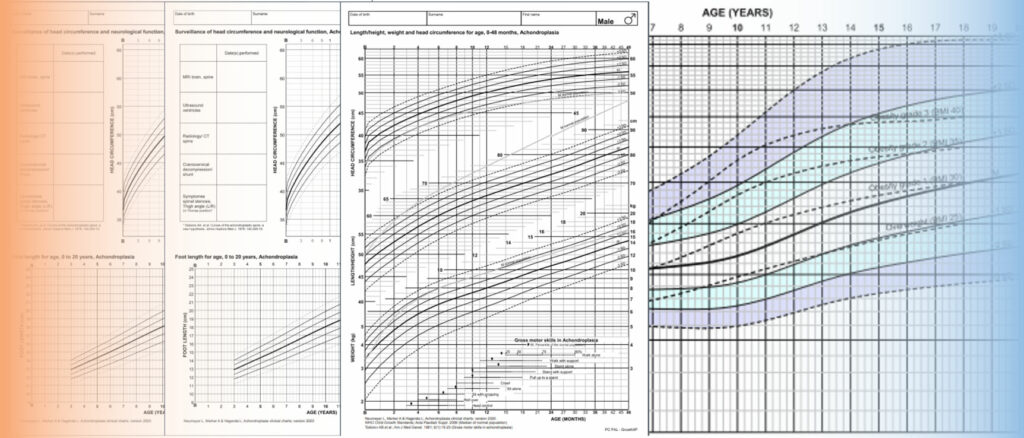Achondroplasia is not only the most common skeletal dysplasia but also one of the most easily diagnosed. However, the management of this condition based on available guidelines is variable. In a new publication in Nature Reviews, Savarirayan et al report 136 consensus statements and recommendations to optimise the management of patients with achondroplasia.
The International Achondroplasia Consensus Statement Group comprised of 55 participants, who are health-care professionals from 15 medical specialties and patient representatives, from 16 countries that span five continents based on the Delphi process. In relation to statural development and monitoring of the head circumference the authors recommend that: ‘growth of infants with achondroplasia should be monitored longitudinally at each medical check-up using achondroplasia-specific height, weight and head circumference growth charts’. The authors also advise that specific charts, including those for BMI, be provided to parents.
To facilitate accurate growth assessment, achondroplasia-specific charts (including BMI) are now available in GrowthXP. This development forms part of PC PAL’s goal to provide specialist clinicians with the digital charts needed to help manage the increasing number of paediatric patients they see with a rare disease diagnosis.
See also: https://www.achondroplasia-growthcharts.com
Reference: Savarirayan R et al. International Consensus Statement on the diagnosis, multidisciplinary management and lifelong care of individuals with achondroplasia. Nature Review (Endocrinology). 18: March 2022. https://doi.org/10.1038/s41574-021-00595-x
